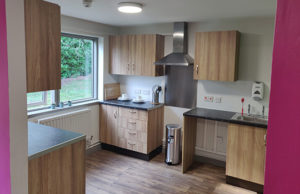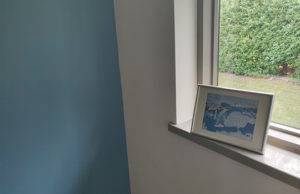Making real, measurable change in a cash-strapped environment can be difficult. You identify the problem, you create a solution, but where’s the money to implement it? Plus, there’s still doctoring to be done.
We work in a hospital trust based in two locations—the Princess Royal Hospital in Telford, and the Royal Shrewsbury Hospital. None of our problems are unique to other district general hospitals, but we think some of our solutions might be and would encourage others to explore similar strategies.
Our foundation programme is good, but we wanted to make it better. We had identified a number of pressing concerns: problems in recruiting and retaining high quality staff who are often attracted to the larger centres, a growing understanding of the effects of the working environment on rates of burnout, low morale in the medical workforce, and a sense that as an organisation we needed to improve our links with the community.
The real spark that brought things together was an F1 who had arrived from another country. We had to put them up in our accommodation and it was terrible. The fixtures and fittings had seen better days, there was an unpredictable shower, and a grotty fridge. When we visited we found things were worse than we had expected. As well as being dingy, the rooms they really didn’t feel like a home. Nostalgia can be an unreliable narrator, but the esprit de corps we remembered from our first jobs would be difficult to nurture in an environment like this.
So what could we do?
We escalated our concerns to a member of our senior management team. This was key. Identifying a problem is easy, but solutions require someone who can offer a high level perspective. Our management colleague Julia Clarke invested time in us and helped us to break down the problem and identify the hurdles.
We presented a clear, ambitious and honest mission statement: “We want free, high quality accommodation for foundation doctors to help us to become the best foundation school in the country.”
The clarity of this statement helped create shortcuts.
The first barrier was the most obvious; cash. There is very little about. We explored internal options which didn’t take long. So where could we turn?
The NHS forward view, sustainability and transformation projects (STPs), and innovative new care models have all helped to reinforce a growing acknowledgement of the importance of collaboration. Local government, the third sector, and external expertise have all worked in successful partnership with the NHS. What would our local government representatives response be to a call for help?
I met with Shaun Davies, the leader of our local council over coffee and immediately he could see the opportunities for engagement. As a local politician, and someone embedded in the local community, he has a real feel for local issues. The contacts and knowledge of local infrastructure helped provide insight into how the pieces of our towns fit together.
We further refined out mission statement:
“We need help to refurbish doctors’ accommodation which we believe would help attract and retain the consultants of tomorrow.”
Very quickly the full force of this was put into action. It really felt like the power of community was brought to bear on the local hospital. The speed of this was astonishing and not like anything I’ve experienced. Shaun put out calls for help through social media, connections in local government and the message spread quickly. This transcended party political boundaries. No capital was sought. This was simply something good.
Offers of help from local businesses, individuals, and financial support from local councils and parish councils flooded in. From one house, to two, to four we were able to increase the scope of our vision.
We assembled a collaborative comprising NHS estates staff, local government workers, and communications teams. Weekly meetings were chaired by Julia, our Trust board representative, with clear lines of communication. Problems were identified rapidly and very quickly the links between NHS staff and their local government counterparts began to complement each other. Assumptions and expectations were challenged in an open and honest dialogue.
 We extended the meetings to include a Trust sponsored initiative to create a new doctors’ mess as part of a commitment to improving wellbeing. The suggestions and support of our colleagues were pivotal in making things move forward.
We extended the meetings to include a Trust sponsored initiative to create a new doctors’ mess as part of a commitment to improving wellbeing. The suggestions and support of our colleagues were pivotal in making things move forward.
Being in a room with people committed to getting stuff done has changed my perspective on what is possible. In February, we showcased our work, from inception to completion in under four months. This is unprecedented. From August we will offer free, high quality accommodation to our new F1s. There will be space for people to sleep after a night shift, with a free breakfast. From April we will have a new doctors’ mess. Food will be provided out of hours. Things will be better.
 The expertise is out there. The NHS has always been a community enterprise, but local hospitals have sometimes drifted from the people they serve. People care and they want to help. Local government holds the key to accessing so many untapped resources, not least the commitment of the people that work there. Bringing the community in to your local hospital may yield powerful results.
The expertise is out there. The NHS has always been a community enterprise, but local hospitals have sometimes drifted from the people they serve. People care and they want to help. Local government holds the key to accessing so many untapped resources, not least the commitment of the people that work there. Bringing the community in to your local hospital may yield powerful results.
Chris Mowatt, Consultant Anaesthetist and F1 Training Programme Director.
Jenni Rowlands, Consultant Radiologist and Director of Medical Education.
Competing interests: none declared.
| The BMJ is calling for doctors to be able to take the breaks that they need for their wellbeing and for patient safety. You can follow our work at https://www.bmj.com/wellbeing and take part in the campaign by sharing your examples of where things are changing for the better or where more work needs to be done through social media using #giveusabreak. |
